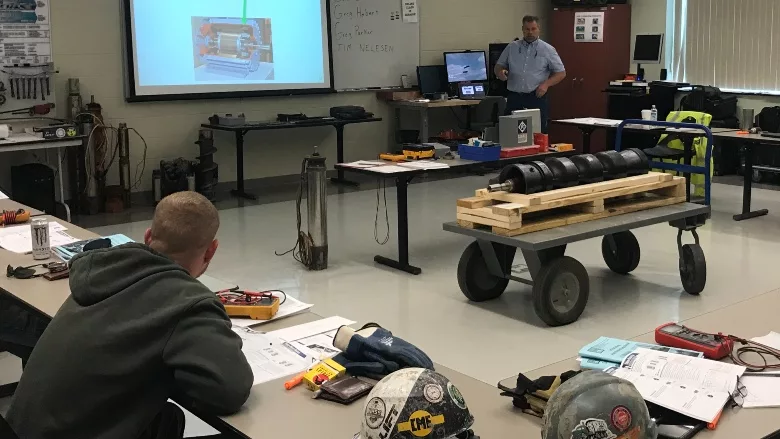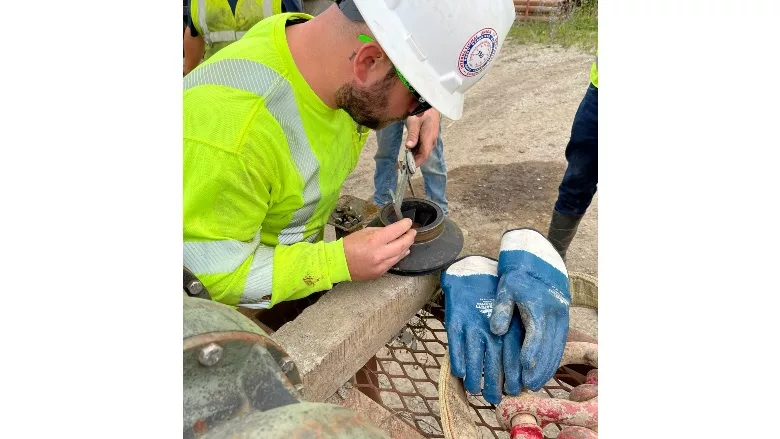Want to Keep Drilling Crews Happy? Train Them
In a Tough Labor Market, Training Can Set you Apart

Training to fill a skills gap in your organization can be formal, like a classroom setting with written work and tests, or more informal, job shadowing sessions.
Source: Dave Bowers

Give employees a chance to deploy new skills in low-stakes settings, before asking them to take on work with millions in equipment and, potentially, coworkers’ safety on the line.
Source: Dave Bowers
We all have hectic schedules juggling drill and pump jobs, doing payroll, ordering and tracking inventory, and bidding new jobs. When did you last take time to show that up-and-coming employee how to do all — or even any — of those tasks?
Employee training and development can increase the profitability and efficiency of our companies. Investing time in developing our employees can help us retain talent, increase job satisfaction and morale, improve productivity, and boost profit potential. Studies have shown employees are 93% more likely to stay at a company actively assisting them in developing their career.
How do we show employees a company’s engagement on this front? Three words: training, training and training. OK, one word three times, but you get the point. Begin to train them on each task we may ask them to do, well before asking them to perform the task in a critical environment.
I can think of many times in my career when I faced a situation without the support of proper training. Things did not go as well as they could have or even went poorly. I walked away having to eat crow, or even wondering whether I had found the right industry for me. My first time on the levers full-time was as the lead driller for the company’s rig on a complex job. The driller’s father-in-law had passed and he needed some time off. When he told me he had to leave, I asked who would take his place. He gave me the name of the person the company had decided to send out. “But he’s not a driller,” I replied, more than a little confused. He paused for a second and responded, “No, you are,” and left.
The job went a little slowly, but I completed without anyone being hurt and performed the necessary work. But I am convinced the stress of that first project took weeks off my life. The company had planned for months to put me in as a lead driller, I later found out. They never thought to begin a formal training or even let me know of their plan. When events forced their hand, they took a chance. Luckily, it worked out, but things could have gone very differently.
Would the company have kept me if I tore up their equipment or hurt someone because of my inexperience?
That first night, I laid awake with doubts about my readiness. I had little time on the levers and no time on the job I took over. We would encounter unstable formations and possibly even flowing sands. It involved dozens of holes, all more than four times deeper than anything I had ever drilled. If things had gone bad on that job, how would I have felt? Would the company have kept me if I tore up their equipment or hurt someone because of my inexperience? Could I have continued to work around drills if I was the cause of someone’s injury?
Management could have mitigated all this uncertainty by completing what I call the “skills development pyramid.” This strategy can help meet the needs of your operation by utilizing the human resources you may already have available. We start at the base of the pyramid:
- The first and largest section involves identifying company needs or shortcomings. Do this regularly and, most important, document it for reference.
- Next, we have the “skills gap” layer. Identify the employees within your organization with the potential to meet the needs you identify. This layer involves getting input from all your people. Where do they think they would do well? What roles do they see others excelling in? (I prefer to not use self-promotion as a sole marker for employee development. When people are ready, I find peers begin to sell the idea of promoting someone.) Once you identify the right candidate, review expectations and the expected timetable to reach the target skill level.
- Then comes the training layer. Make it as formal or informal as your system allows. It could be as simple as having them shadow another employee for a couple of hours a day, or as complex as a dedicated mud school training with written and hands-on testing.
- At the top layer of the pyramid, you evaluate the effectiveness of your training program for meeting the identified skills gap. If the program falls short, identify why and make adjustments. Repeat as necessary.
Check out more of our columns!
Follow these basic steps for each new skill you hope to develop in your employees. They can lead to improved employee performance, better company engagement and better retention, as well as a more complete picture of your employees’ abilities. All of this leads to happier customers, potentially less downtime and more profit.
Until next time, keep turning to the right.
Looking for a reprint of this article?
From high-res PDFs to custom plaques, order your copy today!




